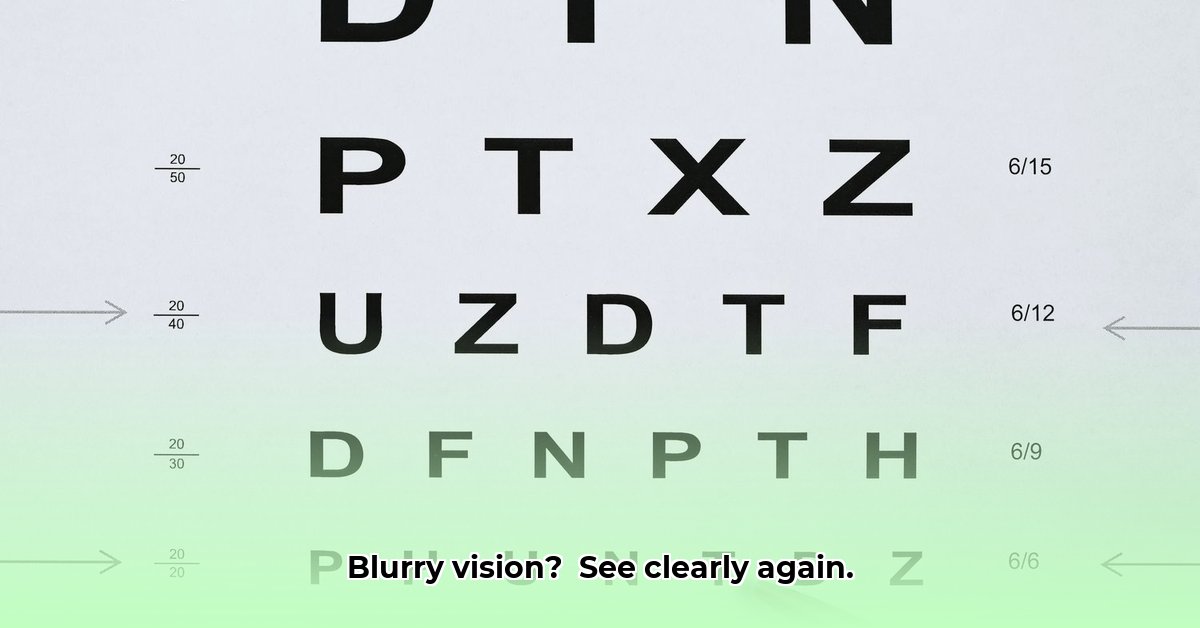
Understanding Your Vision
Having 20/50 vision means you see at 20 feet what someone with perfect (20/20) vision sees at 50 feet. This often means things farther away appear blurry. While this can present challenges, it's manageable with the right strategies and support. Many people thrive with 20/50 vision, and you can too! This guide provides practical steps to improve your daily life.
The Impact of 20/50 Vision on Daily Life
With 20/50 vision, everyday tasks might require more effort. Reading signs from a distance, recognizing faces, or driving may feel more challenging. However, adapting your environment and utilizing helpful tools can significantly ease these difficulties. Remember, this isn't about limitations; it's about empowering yourself to live fully.
Actionable Steps for Managing 20/50 Vision
Let's explore practical strategies to improve your daily life:
1. Comprehensive Eye Exam and Corrective Options
Schedule a Comprehensive Eye Exam: A comprehensive eye exam from your ophthalmologist or optometrist is the crucial first step. They'll assess your vision, identify the cause of your reduced vision, and determine the best course of action. This is vital for personalized recommendations.
Explore Corrective Lenses: Glasses or contact lenses can dramatically improve your vision, making everyday activities significantly easier. Experiment with lenses to find what's most comfortable and effective. Your eye doctor can guide you through the process.
2. Harness the Power of Assistive Technology
Technology can significantly improve your vision.
Magnifiers: Handheld, stand, and electronic magnifiers offer various levels of magnification for close-up tasks, from reading to hobbies.
Large Print Materials: Many publications are available in large print, reducing eye strain and making reading more enjoyable.
Screen Readers and Magnification Software: These tools make digital content, such as emails and documents, more accessible and easier to read.
3. Environmental Adjustments for Better Vision
Simple changes to your environment can also have a big impact:
Optimize Lighting: Ensure adequate lighting in your work and living spaces. Reduce glare from direct sunlight or bright lights using curtains or lamps.
Organize Your Workspace: Keep frequently used items within easy reach, minimizing eye strain from searching.
Strategic Seating: Adjust your seating distance from screens (computers, TVs) for optimal viewing comfort and reduced eye strain.
4. Lifestyle Choices for Eye Health
Your lifestyle contributes significantly to your eye health.
Regular Breaks: Take frequent breaks from close-up work (reading, computer use) to prevent eye strain. The 20-20-20 rule (look 20 feet away for 20 seconds every 20 minutes) is helpful.
Healthy Habits: A balanced diet, regular exercise, and sufficient sleep contribute to overall health, including eye health.
Support Networks: Connecting with others facing similar visual challenges provides emotional support and practical advice. Support groups and online communities can be beneficial.
Best Assistive Technology for 20/50 Vision
Here's a breakdown of assistive technology options for 20/50 vision:
Understanding Your Needs
Before selecting technology, pinpoint your biggest challenges. Do you struggle most with reading, recognizing faces, or navigating? This will guide your choice.
Exploring Assistive Technology Options
Magnifying Apps and Glasses: Readily available and affordable options magnifying text and images on screens or in real-time.
Bone Conduction Headphones: These transmit sound through your cheekbones, leaving your ears free to hear ambient sounds—helpful for situational awareness.
AI-Powered Smart Glasses: Advanced (and higher-priced) devices using AI to identify objects, read text, and describe scenes, offering increased independence.
Audio Labelers: Simple devices for labeling household items, improving organization and independence.
Making the Right Choice
Consider these factors when selecting technology:
- Budget: Prices vary considerably.
- Specific Needs: Focus on technologies addressing your biggest challenges.
- Ease of Use: Choose technology matching your comfort level.
- Professional Guidance: Consult your eye doctor or low vision specialist for personalized recommendations.
Addressing Emotional Aspects
Adjusting to vision changes can be emotionally challenging. Remember that you're not alone. Talking to friends, family, or a therapist can provide invaluable support.
Living Well with 20/50 Vision
20/50 vision doesn't dictate your life. By embracing these strategies, seeking support, and maintaining a positive outlook, you can live a fulfilling and active life. Remember, it's a journey, not a destination. You can successfully manage your vision and thrive.